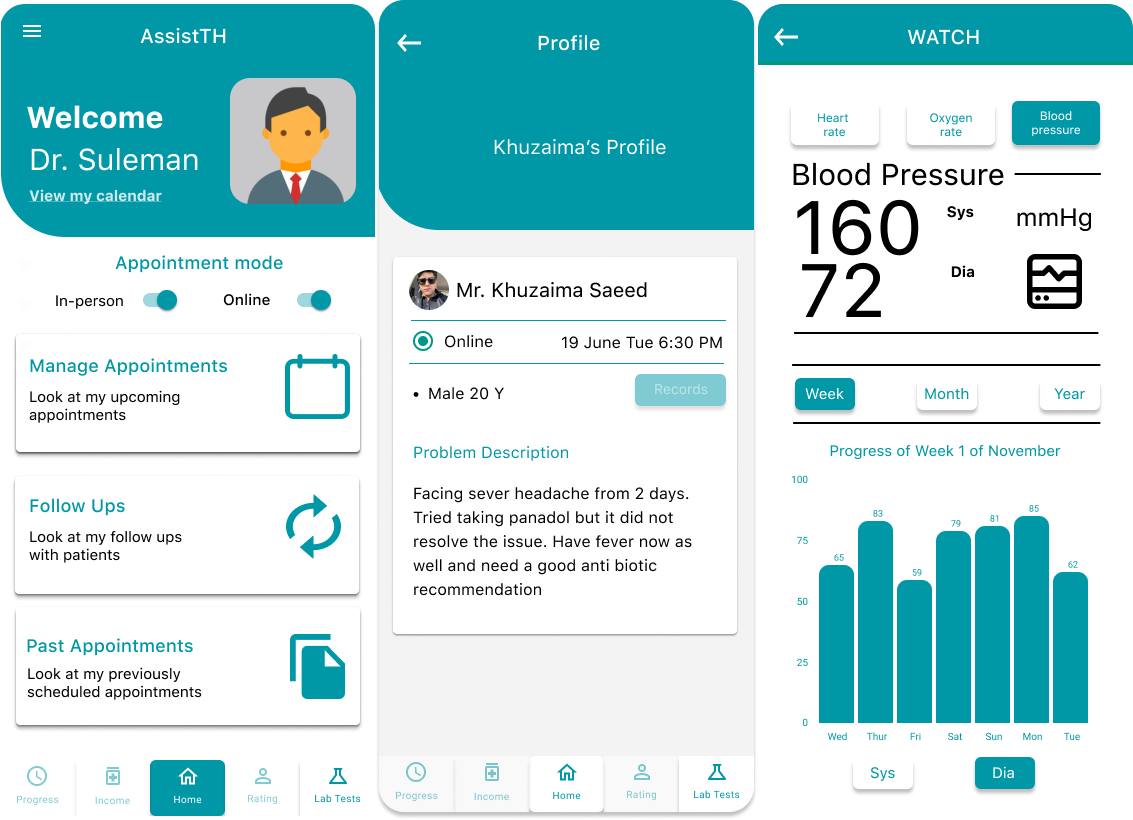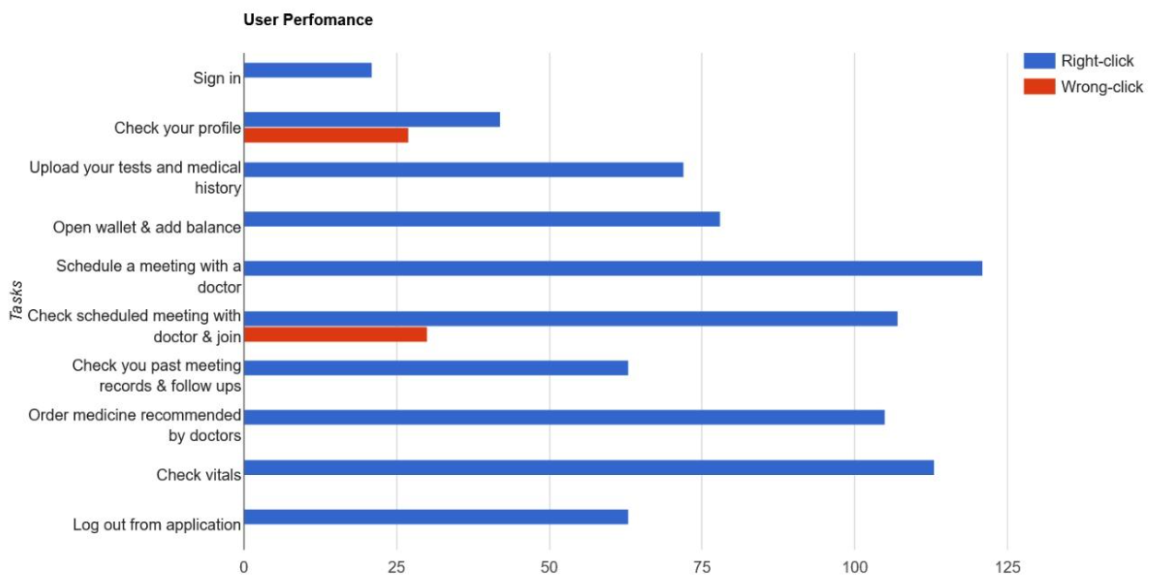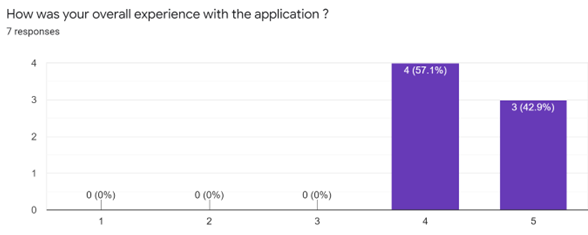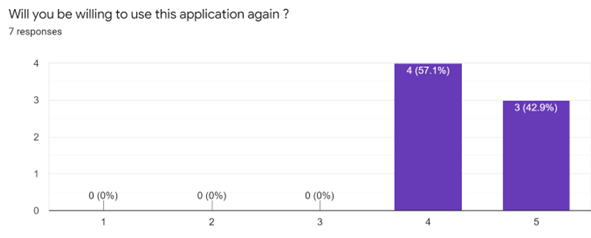Advisor
Dr. Suleman Shahid, Ph.D. from Tilburg University and PDEng from Eindhoven University of Technology.
Contact : suleman.shahid@lums.edu.pk
Collaborators
Khuzaima Saeed, 23100128@lums.edu.pk
Muhammad Hassnain, 23100250@lums.edu.pk
Mohammad Jahanzeb Raza, 23100003@lums.edu.pk
Salman Masood, 23100254@lums.edu.pk
Problem Description
As the world pivots towards a virtual existence, the healthcare sector has not been immune to this transformation. The pandemic has accelerated the shift to digital platforms, but the trend towards telehealth had already been taking shape. Despite the convenience and efficiency that telehealth promises, the current landscape is far from ideal. Communication between doctors and patients is often lacking, leading to less doctor satisfaction and patient ease. Additionally, the current system does not always prioritize patient safety and does not accommodate for all groups of people, such as those with disabilities, limited time, and older adults.
How to bridge the gap in health sector?
The Telehealth industry is rapidly growing and has the potential to revolutionize the healthcare sector. In order to address the need for a modern and innovative solution, our research aims to introduce AssistTH - a one-of-a-kind Telehealth application. The focus of AssistTH is to prioritize doctor satisfaction, patient ease, and most importantly, patient safety. AssistTH offers a range of features including efficient video consultations, pick-up services, 24/7 patient monitoring, and medicine delivery. The app has been designed with extensive research and expert design to address the needs and desires of its users. Additionally, it undergoes rigorous usability testing to ensure a seamless experience. The virtual consultations offered by AssistTH aim to provide patients with access to quality healthcare from the comfort of their own homes. The app's commitment to simplify the lives of its users while providing a trustworthy and efficient Telehealth experience makes it a promising solution in the field.
The study aims to evaluate the impact of AssistTH on the healthcare sector and its potential to transform the traditional doctor-patient relationship. The results of the research will contribute to the ongoing discourse on the role of technology in healthcare and provide insights for the future development of Telehealth solutions.
What was the relevant work done before?
TeleHealth encompasses a preventive, primitive, and curative aspect [1]. We focused on synchronous TeleHealth sessions and their improvements. During the first quarter of 2020, the number of TeleHealth visits increased by 50%, compared with the same period in 2019, with a 154% increase in visits noted in surveillance week 13 in 2020, compared with the same period in 2019 [2]. According to a database of commercial and Medicare claims run by Fair Health, there was a reported increase in telehealth claims from 0.15% in April 2019 to 13% in April 2020, an increase of 8,336% [3]. This sudden increase makes TeleHealth an important field and requires attention of researchers for improvements. We further explored tele monitoring, tele consultation, tele rehabilitation, and delivery of care. We also analyzed patients and doctors experience with TeleHealth. This made us better aware of the requirements of both end users. We consulted over fifteen research papers including a literature review paper on TeleHealth. We also analyzed applications working on this domain in Pakistan. This allowed us to not only understand TeleHealth better but also the problems and innovations in fields.
Understanding the Users:
To gain a deeper understanding of telehealth, its challenges, needs and desires, we conducted comprehensive user research. We collected data from various public and private hospitals, including Mayo, Sheikh Zaid, Services, Al-Ehsan, National, and Akhtar Saeed. Our sample included doctors and patients from different socio-economic and demographic backgrounds, with equal representation from both genders to prevent any bias. We also collected data from the elderly and disabled who often face difficulties traveling to hospitals, as they have frequent follow-up appointments that can be done online.
We employed a mixed-method approach combining qualitative and quantitative data analysis, using contextual inquiry to ensure the reliability of our results. Our structured and semi-formal interviews were conducted in a language that was comfortable for the individual, with some questions asked in English, Urdu, and Punjabi. We surveyed and interviewed individuals from different age groups, financial and educational backgrounds, professions, distances from hospitals, and frequency of hospital visits. We also circulated a Google form to survey the general public who may need to visit hospitals for various reasons.
Our quantitative data allowed us to reach a larger sample size, while qualitative data helped us to capture the human experience and provide detail-oriented insights. Graphs and a detailed table of our findings can be found at the end of the paper.
What are the need & desires of our user group?
Based on the data collected from over 110 online responses and 35 in-person interviews (24 doctor surveys and 12 doctor interviews, and 15 patient surveys and 20 patient interviews), we gained a deeper understanding of the problems, needs, and desires of both patients and doctors.
What are the challenges & risks faced by doctors in the hospitals?
We ensured socio-economic, demographic, specialization, and gender diversity in our sample to prevent any bias. Our results showed that the mean age of the doctors was 30-39 and the majority of them were FCPS with a mean income of 100,000 to 150,000 Rs a month. 83% of the surveyed doctors had experience with telehealth and they shared the biggest problems they faced, including:
1. Lack of understanding of the patient's objective behind the appointment
2. Patients' difficulty in describing symptoms accurately.
3. Inability to check patients' vitals and records.
70% of the doctors expressed concern about catching COVID during in-person checkups, creating a mental stress for them. However, only 63% of the doctors agreed to conduct online checkups due to the above-mentioned problems and the challenge of building trust during online appointments. The doctors were open to the idea of incorporating wearable tech to provide them with patients' medical data, as it was considered practical and feasible. They also showed positive feedback towards having access to medical records during online checkups.
The doctors were reluctant to check patients online due to lack of records and vitals so we asked them what if they are provided with such information and we received very positive response on that.

We had to think of a way to provide doctors with the medical data of the patients and we thought about introducing a wearable tech for this purpose. This is not only possible but also practical. We also received positive feedback on that which can be seen in the graph below.

The third concern doctors had been that they had no way to access the medical history of the patients. This is an important part of checkup because according to experts 70% of disease is diagnosed by just looking at medical records[4]. So, we asked doctors will they be willing to opt for an online mode if they were provided the medical records. We again received very positive results on that.

What are the Pain Points of patients visiting hospitals?
We maintained socio-economic, demographic, and gender diversity among the patients in our sample. The results showed that the mean age of the patients was 18-29, with a mean education level of bachelors and a mean income of 100,000 to 150,000 Rs a month. The biggest problem for patients was the travel burden, with some participants having to travel from another city for follow-up checkups. Female patients also faced difficulties in finding someone to accompany them to hospitals. 43% of the patients reported fatigue due to travel to hospitals, while 60% faced difficulties during hospital visits.

Furthermore, 62% of the patients were concerned about COVID exposure.

Around 20% of the participants had previous experience with telehealth, with 40% having a satisfactory experience and 37% a neutral experience. The problems they faced included lack of proper feedback, doctors not showing up, and difficulties with the application, indicating the need for an improved online health service model. The results showed a highly positive response from the participants when asked about their willingness to use such a model. The results showed that patients were willing to opt for an online mode for follow-ups, even if it meant paying extra, highlighting the need for an online health service.

The most interesting thing is that patients are willing to opt for an online mode even if they must pay extra, this shows the need of an online health service. 90% of the participants were willing to opt for an online meet-up for follow ups. One of the participants who is from Gilgit-Baltistan told us, “In Gilgit-Baltistan, army organizes medical camps. The days are announced that expert of this field will sit on this day, and that's how we get medical checkups once a year. We do not have proper health facilities. I will personally be willing to use an online health service.”
Based on the qualitative insights, we developed alternative designs and evaluated them based on trust, reliability, quality, accessibility, feasibility, and efficiency. We combined the features that users liked from the different alternatives to create a final design, which was then tested using a paper prototype. The results from the prototype testing with four users were very positive, providing validation for our design and the need for improved telehealth services.
How did we design the solution?
To solve the problem, we filtered and reviewed seven design alternatives based on six criteria categories: Trust, Reliability, Quality, Accessibility, Feasibility, and Efficiency. We conducted user research and contextual inquiry to gather data on user perceptions and concerns about the design alternatives. Based on the findings, we selected a final design that included features such as video consultation, pick and drop service, medicine delivery, lab tests via home collection, vitals monitoring, emergency response, enhanced accessibility for differently-abled individuals, reminders, a wallet, and security and privacy.
How have low-fidelity prototypes and wireframes improved the user experience?
We moved to low-fi prototyping and created hundreds of sketches in our "crazy eight" designs. After analysis, we arrived at a uniform solution for our screens and finalized the designs for our paper prototypes. These designs were then tested with users using paper prototypes to evaluate the user experience.

Our final design was focused on simplicity, accessibility, understandability, and functionality, as determined by the prototype testing results. The hi-fi design goals included social acceptability, ease of learning, efficiency and flexibility, ease of recall and consistency, few errors, aesthetic appeal, visibility of system state, and safety and privacy.
How did we transition our solution from a low-fidelity prototype to a high-fidelity prototype?
We conducted a pilot study on our lo-fi prototype to test the user experience. Based on users' feedback, we made changes to the design and moved to hi-fi prototyping. We used Figma to create the hi-fi prototype. Some of the highlights of our hi-fi prototype are as follows:


How were users involved in testing our solution's usability?
Our goal was to conduct usability testing with both patients and doctors as participants. The patient-oriented side of the app was tested with patients, while the doctor-oriented side was tested with doctors. However, due to resource constraints, we were only able to approach LUMS students for the usability testing, limiting the demographic diversity of our sample. Nonetheless, we aimed to keep the ratio diverse by including students from different regions of the country.
All participants were asked to sign a consent form and fill out a pre-test questionnaire, which included both open-ended and closed questions to gather both qualitative and quantitative data.
How did patients test our solution?
For the patient-oriented side, 20 participants performed the following tasks:
1. Sign In/Login.
2. Schedule a meeting with a doctor.
3. Join a scheduled appointment.
4. Check past meetings and follow-ups.
5. Order medicine from a pharmacy.
6. Order lab tests.
7. Check vitals.
8. Side menu tasks.
9. Logout.
How did doctors test our solution?
For the doctor-oriented side, 8 participants performed the following tasks:
1. Sign In/Login.
2. Check Profile.
3. Check scheduled meetings.
4. Join the appointment, check vitals and medical records of a patient.
5. Check past meetings and follow-ups.
6. Open wallet and view earnings.
7. Log Out.
What did usability testing reveal about user interaction with our solution?
After completion of the tasks, participants were presented with a final questionnaire to gather further qualitative and quantitative data. We used various measurement techniques to analyze the data, including Excel sheets to track right/wrong clicks and time taken for tasks, graphs to display click counts and time taken, and Google Forms to gather quantitative data and interviews to gather qualitative data. This allowed us to better understand the participants' opinions and views about our design.
What quantitative results were gained from the usability testing?
When we asked patients about their experience with the application, we received very positive response. 50% of the participants found the application easy to use and rated it with 5 on a scale of 5 as shown in the graph below:

Many of the participants were able to navigate and complete the tasks without wrong clicks, as shown in the graph below:

Our application would have been useless, if there is no one to such it, so we asked users about their willingness to use such an application and received very positive results on that. 50% and 45% of the participants rated their willingness to use the application as 4 and 5 out of 5 respectively as shown in the graph below:

We asked similar questions to doctors for post-test questionnaire and received very positive results. All of the doctors either rated the application as 4 or 5 out of 5 as shown in the graph below:

It is not just the initial experience that counts but also that whether the doctors will be willing to use such a solution or not. We received very positive feedback on that doctors were willing to use the application again which can inferred from the graph below:

What qualitative insights were gained from the usability testing?
User feedback on the design of the application was overwhelmingly positive. Participants appreciated the clear, interactive, and easy-to-use interface. Participant A said, "The interface is clear and easy to understand with subdivisions of each section, making it easy to navigate."
When asked about efficiency and flexibility, users found the application convenient and efficient as it allowed them to perform multiple healthcare-related tasks in one place. Participant E mentioned, "It's very convenient to have all my appointments, medication orders, test results, and follow-ups in one place. It's very efficient."
Consistency and remembrance were also positively received by users. The design of the application was easy to remember, according to Participant G , "The layout is really nice and everything is easily visible, with even graphs included."
The color scheme received high praise, with a user stating, "I love the design and functionality of the application, and the color scheme is really nice and calming."
In terms of functionality, our results showed that users made few errors, but some confusion was encountered when performing specific tasks such as checking profiles, scheduled meetings, and follow-ups. A participant commented, "Icons were missing in some places, which can be confusing, as imagery is helpful." Additionally, some users found the system state overwhelming, as multiple actions could occur on one screen at times.
There were also concerns regarding security, privacy, and legitimacy raised by users. 95% of patients expressed interest in continuing to use the application in the future. When we asked doctors about their experience with the application, the results were similarly positive, with all doctors expressing a willingness to use the solution.
What impact have we made on the telehealth through our contributions?
Our contributions to the field of telehealth focus on addressing the key pain points faced by both patients and doctors. The current telehealth solutions suffer from a lack of access to patient medical records, history and vitals, compromising patient comfort, and a lack of inclusivity for differently abled individuals. To overcome these challenges, we have developed AssistTH, an all-in-one health application that incorporates features such as appointment scheduling, pick-up service, ordering medicines, and vitals check in a seamless manner. Our solution also caters to visually and audibly impaired users, with features such as subtitles and assistive touch. Furthermore, AssistTH has a voice-based assistant that reminds users of appointments and medicine schedules, and records meeting notes for both parties.
The development of AssistTH is based on existing knowledge and studies in the field of telehealth, as well as the evaluation of our hi-fi prototype with users, which received positive feedback on its functionality and smooth workflow. However, we also acknowledge the importance of user-centered design and have taken into consideration the findings from our low-fidelity testing to improve the overall design and usability of our solution. Our final design has undergone numerous iterations and improvements based on user feedback, addressing visibility and mapping issues in specific use cases. With these efforts, we aim to provide a comprehensive and efficient telehealth solution that meets the needs of all users.
What were the limitations of our study and what avenues for future work exist?
The limitations of our study can be attributed to several factors. Firstly, the scope of our data collection was limited due to capital and time constraints. This meant that we were unable to gather information on a larger scale and obtain a more comprehensive understanding of the telehealth landscape. Additionally, due to the ongoing COVID-19 pandemic and the accompanying SOPs, we were unable to access the telehealth block at King Edward Medical College, which impacted our data collection. Furthermore, cultural considerations made it difficult to maintain an equal gender balance in our sample population.
Another limitation of our study is the biased nature of our usability testing, as it was largely conducted in the premises of LUMS. This might have influenced the responses obtained and may not accurately reflect the views of the wider population. Moreover, time constraints made it difficult to conduct proper usability testing with doctors, which would have been valuable in gaining a deeper understanding of their needs and preferences. Despite these limitations, our study provides valuable insights into the telehealth landscape and highlights areas for improvement.
Future work in the telehealth landscape could aim to expand the scope of data collection by gathering information from a larger number of individuals, including healthcare providers and patients from diverse regions, to obtain a more comprehensive understanding. Addressing cultural considerations, conducting usability testing with healthcare providers, overcoming the bias in usability testing by conducting tests in different environments, and incorporating the impact of COVID-19 into the study can provide a more accurate representation of the views of the wider population and improve the telehealth experience for patients and healthcare providers.
Conslusion:
Our extensive research and user-centric design approach have resulted in the creation of AssistTH, a telehealth application that meets the needs of both doctors and patients. The application offers versatile functions and provides solutions to common problems in the telehealth sector. While this application demonstrates the potential of thorough research and design, the field of telehealth and healthcare is constantly evolving, leaving room for future research and innovation. As designers, our responsibility is to solve the problems of our users and AssistTH serves as a testament to the success of this approach.
References:
[1] M. Ade, N. Doulamis, S. S. Wagle and M. G. Ullah, "TeleHealth: Healthcare technologies and TeleHealth Emergency (THE) system," 2011 2nd International Conference on Wireless Communication, Vehicular Technology, Information Theory and Aerospace & Electronic Systems Technology (Wireless VITAE), 2011, pp. 1-4, doi: 10.1109/WIRELESSVITAE.2011.5940870.
[2] Koonin LM, Hoots B, Tsang CA, et al. Trends in the Use of Telehealth During the Emergence of the COVID-19 Pandemic — United States, January–March 2020. MMWR Morb Mortal Wkly Rep 2020;69:1595–1599. DOI: http://dx.doi.org/10.15585/mmwr.mm6943a3external icon
[3] Karen Y. Capusan, Talia Fenster, Patient Satisfaction with Telehealth During the COVID-19 Pandemic in a Pediatric Pulmonary Clinic, Journal of Pediatric Health Care, 2021,, ISSN 0891-5245, https://doi.org/10.1016/j.pedhc.2021.07.014.
(https://www.sciencedirect.com/science/article/pii/S0891524521001875).
[4] Karen Y. Capusan, Talia Fenster, Patient Satisfaction with Telehealth During the COVID-19 Pandemic in a Pediatric Pulmonary Clinic, Journal of Pediatric Health Care, 2021,, ISSN 0891-5245, https://doi.org/10.1016/j.pedhc.2021.07.014. (https://www.sciencedirect.com/science/article/pii/S0891524521001875)
